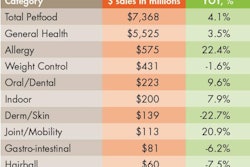Whole prey diets are commonly used in the zoo and home setting for captive exotic and domestic cats. In this study, the precision-fed cecectomized rooster assay was utilized to determine the protein quality and nitrogen-corrected true metabolizable energy (TMEn) of 17 whole prey samples (mice, rats, rabbits, chicken and quail), and two ground poultry-based products (chicken and duck).
Amino acid score (AAS) and protein digestibility corrected AAS (PDCAAS) were calculated utilizing the nutrient profile recommendations for domestic cat food as a reference value. Average individual indispensable amino acid (IAA) and total IAA (TIAA) digestibility coefficients ranged, but depended on amino acid and sample. For a majority of the whole prey items, AA concentrations were greater than the AAFCO (2012) domestic cat nutrient profile recommendations for growth and reproduction and adult maintenance; however, some whole prey had AA concentrations below the AAFCO (2012) recommendations.
The TMEn expressed as the percent of GE ranged from 66% to 85%, demonstrating how variable the digestibility of these items may be and justifying more research in this area. Both Met and Tau are commonly added to commercial petfoods, so supplements are readily available to address potential deficiencies and improve protein quality. A direct comparison of the metabolizable energy of whole prey items by in vivo feline and rooster experiments is needed.
Source: K.R. Kerr et al., 2014. Commercially available avian and mammalian whole prey diet items targeted for consumption by managed exotic and domestic pet felines: True metabolizable energy and amino acid digestibility utilizing the precision-fed cecectomized rooster assay. J Anim Sci online August 2014. doi: 10.2527/jas.2013-7246.
















